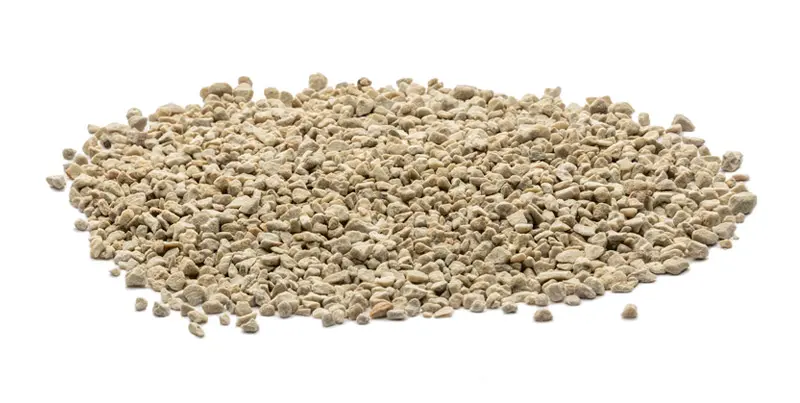What is Organoclay?
How Organoclay is Used and the Benefits
Organoclay is a naturally occurring material that is commonly used in water treatment. Organoclays are well known for their high removal rate of oils and other hydrophobic compounds in water. The media is a naturally occurring mineral (commonly zeolite, bentonite clay, or a smectite mineral) which is chemically alternated to create a unique surface on the mineral. Hydrosil’s organoclay is a zeolite based organoclay which has does not swell upon exposure to water.
How does Organoclay Work?
Hydrosil alters zeolite with a surfactant bilayer that enhances the media’s ability to remove pollutants. The surfactant bilayer is created when a quaternary amine or surfactants is added to the mineral to modify the surface commonly referred to as surface-modified-zeolites (SMZ). By modifying the surface, we create a strong affinity with either cations (positively charged ions, i.e. dissolved metals) or anions (negatively charged ions, i.e. phosphate, nitrate). The bilayer that contains hydrophobic chains will capture non-polar organics such as benzene. The surface of the media resembles the figure shown below.

How is Organoclay Used?
Organoclays are used in various industries including remediation, water treatment, soil treatment, in polymer chemistry, in paints as a thickening agent, grease, inks, oil drilling fluids, rheological products, cosmetics, and many more commercial and industrial applications.
What are the Benefits of Using Organoclay?
Versatile installation — Load the media in standalone units, post-treatment, or pre-treatment units. To learn more about these systems on our Water Filtration Systems Page.
Cost Savings — Organoclay is an economical alternative to other treatment technologies such as resins or Granular Activated Carbon (GAC).
Increase Efficiency — Organoclays will decrease the loading on other treatment systems and increase the life of capital equipment.
Storage — Organoclays have a long shelf life and require dry ambient environments.
Handling — Organoclays are safe and easy to use.
How is Organoclay Used in Water Treatment?

Organoclays are used in industrial and commercial water treatment such as:
Condensate Treatment Systems: Condensate treatment is part of every power plant, refinery, chemical manufacturer, and any facility that uses stream. Typically, the condensate is recycled back into the boiler feed water where it is routed through boiler tubes for continued boiler use.
Recycling condensate is a common practice which decreases the amount of water disposal but can be costly if not designed correctly. By not treating the condensate that goes back into your boiler feed water you are introducing high concentrations of pollutants that came off leaking pumps, valves, and piping to your boiler tubes. When these pollutants (hydrocarbons and minerals) are introduced to the boiler tubes they will deposit on the surface which will reduce the heat transfer and overall reducing the boiler efficiency.
Hydrosil works with condensate treatment manufacturers and users on providing a specialty blend of filter material for treating the pollutants that are commonly found in condensate. The condensate treatment blend of filter media uses organoclay and activated carbon to trap the contaminates in its’ pore structure.
Pre or Post Treatment of Reverse Osmosis Units: Reverse Osmosis (RO) systems use a semipermeable membrane to remove ions and dissolved solids. They are relatively expensive capital equipment that should be protected and maintained. Organoclays are used as pretreatment to protect the capital equipment from fouling. Common pollutants that the organoclay treats as a pre and post treatment of RO units includes pesticides, solvents, or volatile organic compounds which cannot be treated with an RO unit.
For more information, read how Organoclay can be used in pre-treatment systems.
Process Water Reuse Systems: Leaking pipes, valves, vessels, or inefficient processes can leave process water tainted with low concentrations of pollutants. These pollutants over time can lead to hazardous water that needs to be hauled off site for treatment. A common use of organoclay is to treat process water onsite in a vessel to reuse the water instead of discharge it or accumulate it and haul it off-site as hazardous waste. Tainted water can lead to downtime of capital equipment and hefty bills for hazardous waste disposal. Examples of process water treatment systems might include the wash water that is used in a metal plating facility, or batch water that has low concentrations of acrylic paint thinner. Simply installing a vessel of organoclay in a process water loop can significantly reduce planned and unplanned downtime.
Organoclays are used in remediation projects such as:
Groundwater Treatment: Pump-and-Treat Systems (P&T) are typically implemented when groundwater is contaminated. For pump-and-treat systems, the water is typically pumped out of the ground into a large vessel. The large vessel or series of vessels is filled with a filter media (i.e. granular activated carbon, organoclay, resin) that removes any pollutants of concern such as heavy metals or oil. The water is then put back into the ground. Pump-and-treat (P&T) are cost-effective designs for treating water if you select the most appropriate filter media to target your pollutants.
Sediment Capping: Capping, also known as permeable reactive barrier (PRB), is an in-situ remediation technology that typically follows dredging operations. Organoclay is used in sediment capping due to its’ ability to isolate contaminated sediment from a surrounding aquafer or aquatic system. It is a cost-effective material for capping as it has strong affinity for removing high molecular weight polycyclic aromatic hydrocarbons (PAHs), polychlorinated biphenyls (PCBs), and heavy metals.
Stormwater Treatment: Organoclay is used to improve water quality in stormwater runoff. Typically, pollutants found in stormwater are monitored by state regulators to ensure we have clean lakes, rivers, oceans and wetlands. The National Pollutant Discharge Elimination System (NPDES) was put in place in 1972 to help address sources that were discharging pollutants to waterways. The Environmental Protection Agency (EPA) has a priority pollutant list for chemical pollutants which are closely monitored in the permitting process for the Clean Water Act programs such as NPDES. Here is a link to the priority pollutants: https://www.epa.gov/sites/default/files/2015-09/documents/priority-pollutant-list-epa.pdf
- Activated Carbon
- Organoclay
- Activated Alumina